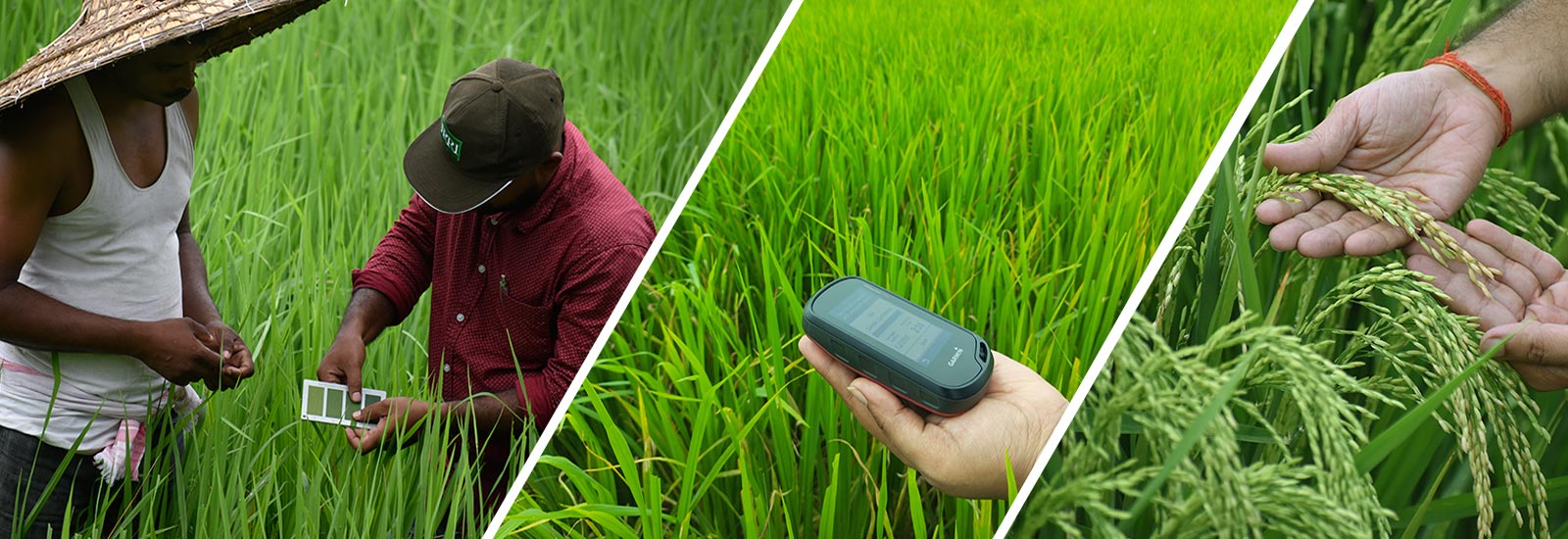Drying
Importance of drying the paddy correctly
Rice is usually harvested at grain moisture content (MC) between 20 and 25% (wet basis). Any delay in drying, incomplete drying or uneven drying results in qualitative and quantitative losses, such as:
- Yellowing or discoloration caused by mold development and heat build-up from respiration.
- Reduced milling yields caused by high temperatures and re-wetting of grains.
- Loss of germination and vigour from grain respiration, mold and insect activities or exposure of grains to higher temperatures.
- Damage caused by insects which are more active at higher MC levels.
Some recommendations on drying the paddy
- Clean the grains before drying to avoid uneven drying and wet spots.
- Dry the paddy immediately after harvest; dry to 17% MC if the paddy is tobe stored for a maximum of two weeks and to be sold at the MSP.
- When drying for milling, target 14% MC so the grain weight and milling yield won’t decrease. When storing grains for 8-12 months, dry the grains up to 13% MC or less.
- For long-term storage (1 year or more), dry to 9%.
- Do not mix grains maintained at different MCs to avoid cracking.
- Always monitor the grain temperature and MC to prevent the grains from being exposed to excess temperatures and overdrying.
Solar Bubble Dryer
The Solar Bubble Dryer (SBD) is the latest low-cost drying technology developed by IRRI, Hohenheim University and GrainPro. The SBD is mobile and is completely independent from fuel or the power grid, and therefore has very low operating cost. It comes in different sizes, with current models having 0.5 and 1.0 ton batch capacity.
How does it work?
The SBD uses energy from the Sun in two ways. First, the drying tunnel serves as a solar collector to convert the energy contained in the sunrays entering the transparent top of the drying tunnel to heat, which increases the temperature of the drying air for faster drying. Second, it is equipped with a photovoltaic system consisting of a solar panel, a deep cycle rechargeable battery and a controller to generate electricity that drives a small blower to move air through the drying tunnel, inflate the tunnel, and remove the water evaporated from the grains placed inside the tunnel. A simple roller dragged on ropes attached to the ends underneath the tunnel is used for mixing the grains without the need to open the tunnel. A rake for internal mixing is also available.
How does it compare to other traditionaldrying method?
The SBD improves the traditional sun-drying process, in which farmers spread the paddy in the open under the sun, by protecting it from animals, insects, contamination and rain. The drying tunnel also provides a buffer for the temperature and protects the grains from overheating, as it is common during sun-drying at noon.

